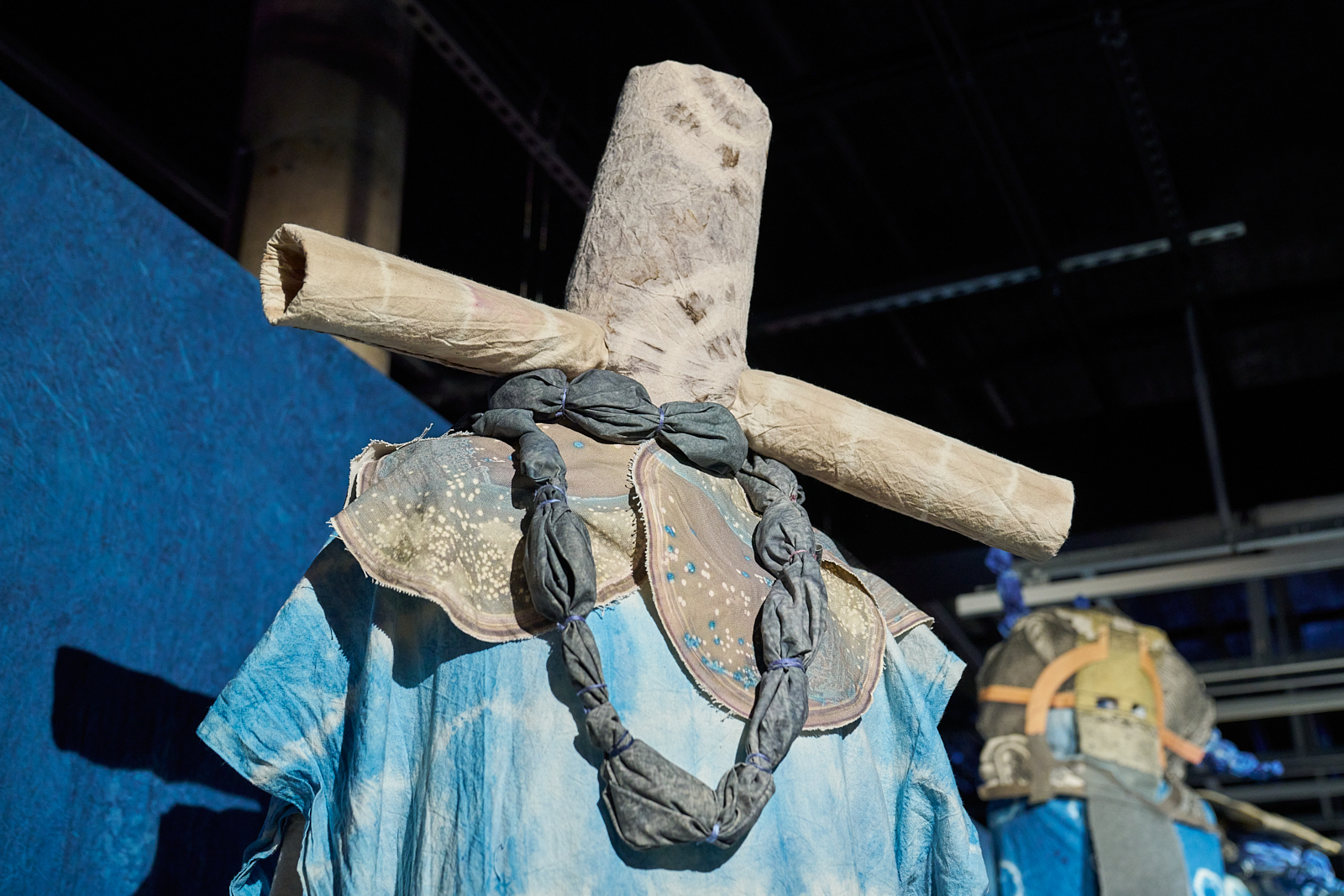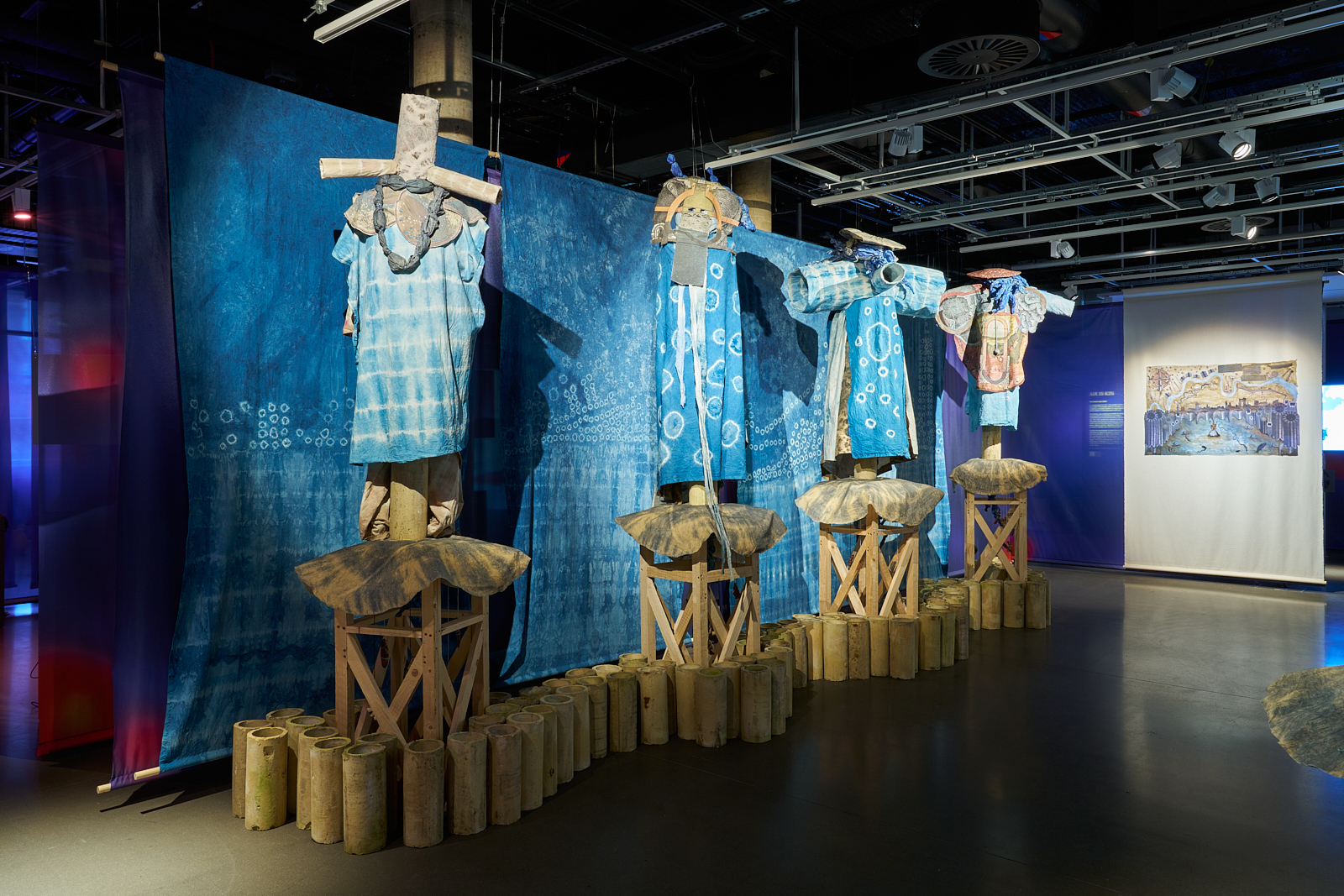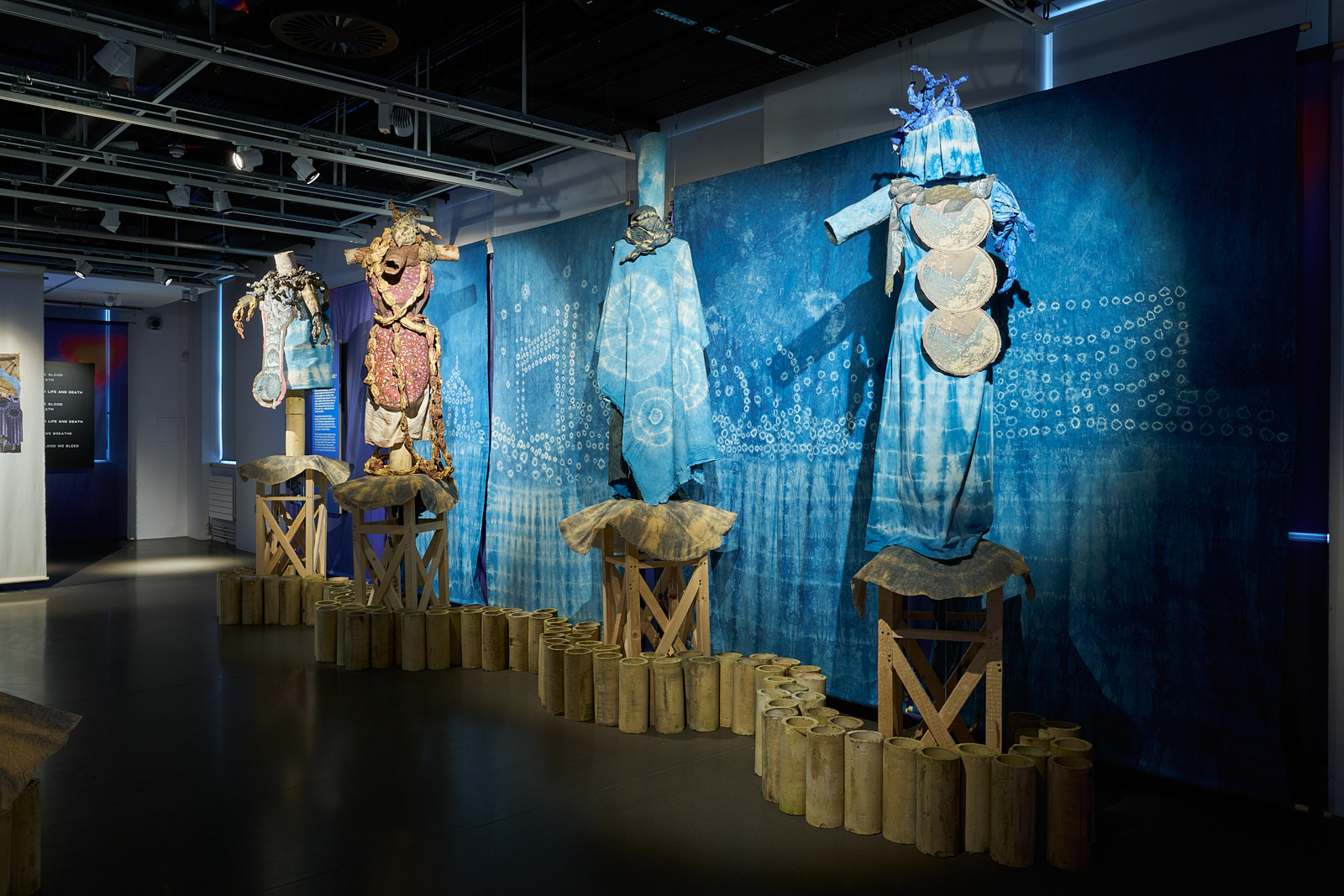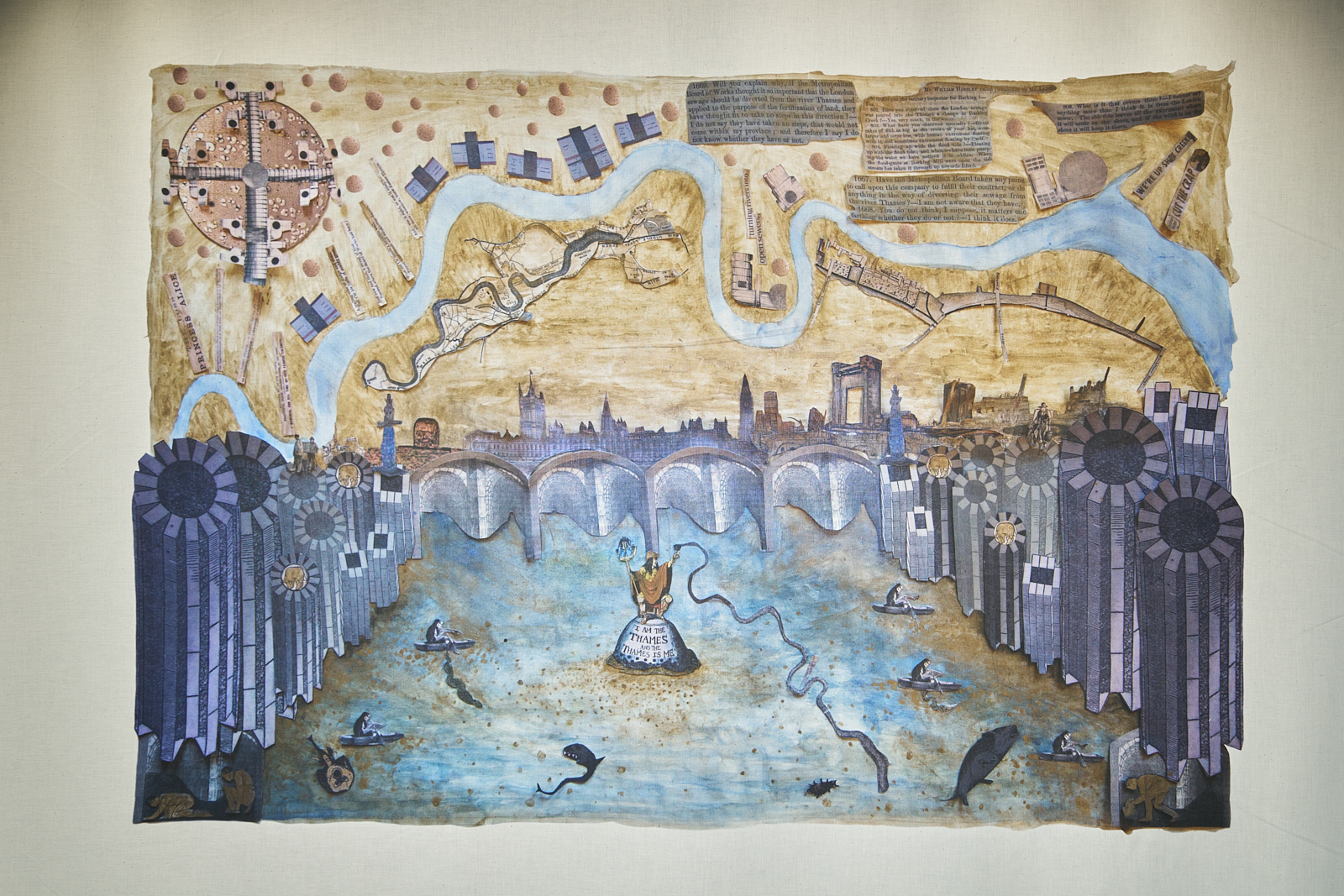I am the Thames and the Thames is Me (2024)
'I am the Thames and the Thames is Me' explores historical, bodily, ecological, and contemporary perspectives on the interconnectedness of human waste and the River Thames. Gayle Chong Kwan's fabric sculptures are part mythical sewer creature, part sewage pipe, and part ‘river guardian’, or angry spirit. She worked with contemporary researchers and researched archives surrounding the commissioning of Bazalgette’s 19th Century London sewer system. Gayle Chong Kwan dyed fabric using mud, clay, washed-up objects from the banks of the Thames, with her own urine, an ingredient historically used in dyeing and fabric production, and made stool sculptures using sewage from Thames Water waste processing sewage works in Beckton and a hand drawn map of London using sewage ash.





‘I am the Thames and the Thames is me’ engages with Chong Kwan’s wider practice examining individual and collective political action, human waste, trans-historical research, and Indigenous perspectives. In this new work, Chong Kwan shares her deep research into nature, ancestors, and shared rights and responsibilities. It has been informed by conversations with multiple researchers at King’s College including Dr Randa Kachef, Lecturer in the Department of Geography, whose current research project ‘Thirst’ looks at sewage and the Thames. Visitors are enveloped by life-size wearable totems made of printed and dyed fabric using mud, clay, washed-up objects, roots, and plants from the banks of the Thames and combining it with her own bodily waste urine. Each totem draws on Bazalgette’s 19th-century sewage designs, human waste, mythical beasts living in London’s sewers to river pollution and disease, creating a series of fantastical and angry river spirits.
Gayle Chong Kwan said: “‘I am the Thames and the Thames is Me’ calls to reposition our bodies in historical memory and future action of the waste that we create, to be communal and collective, we are in the river and of the river, at a time when pollution in the Thames is again a major issue.”